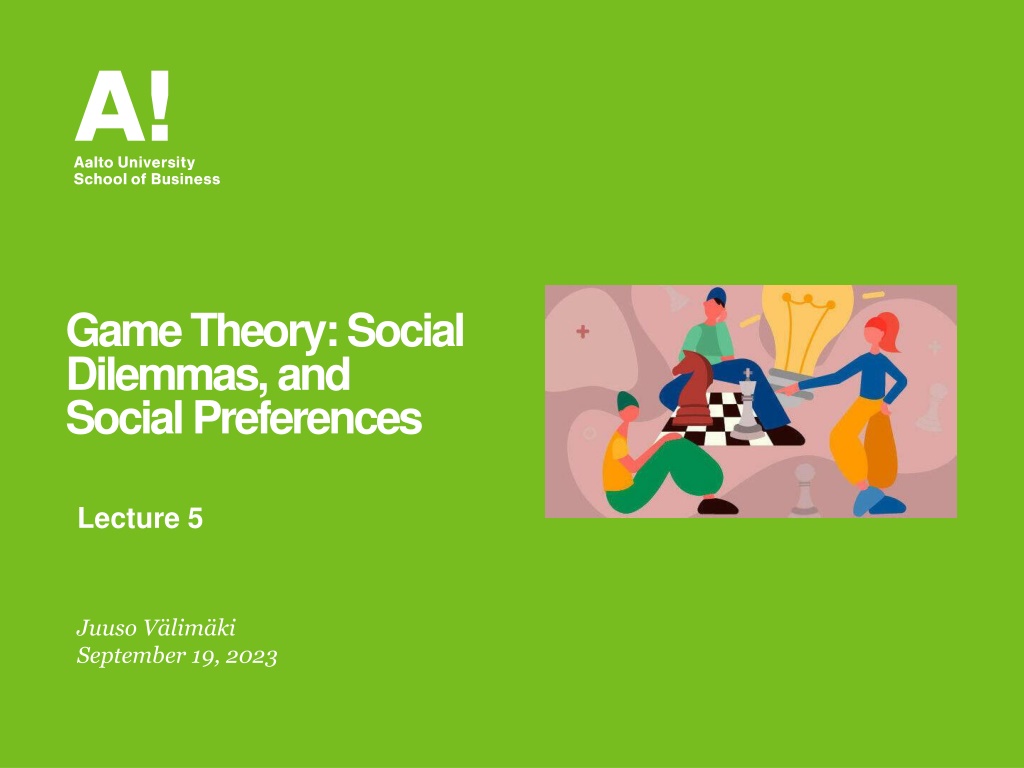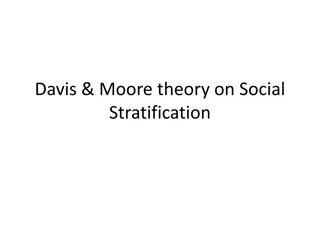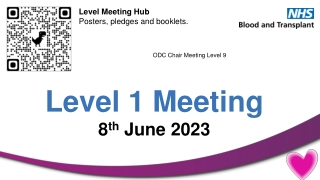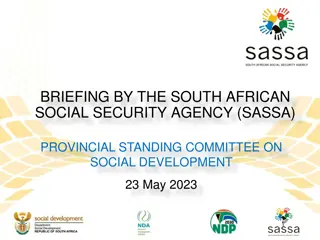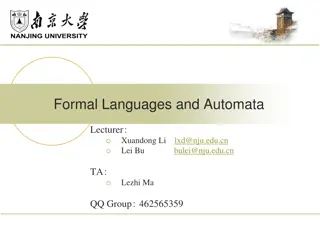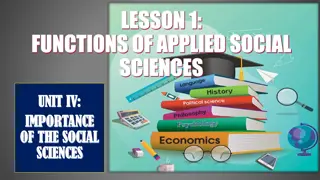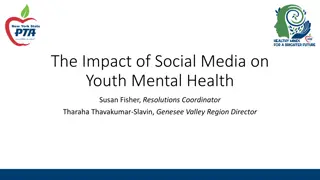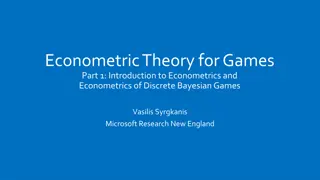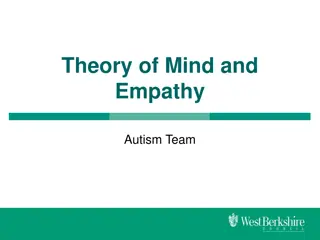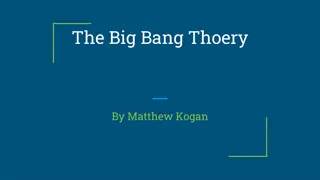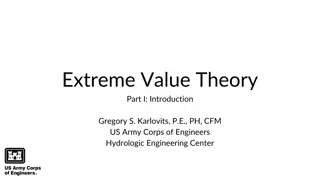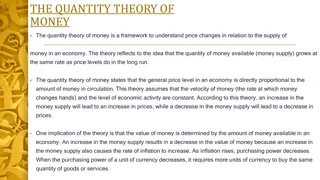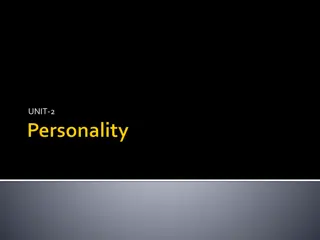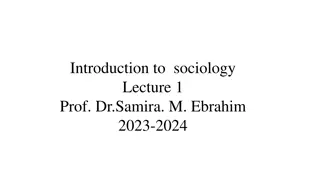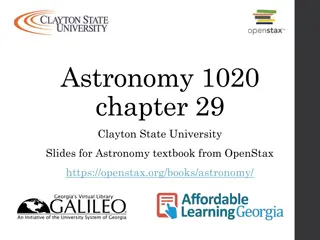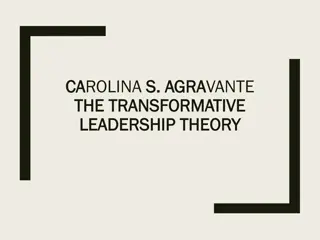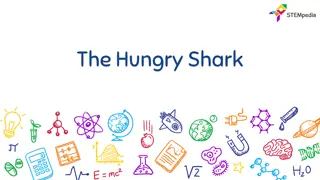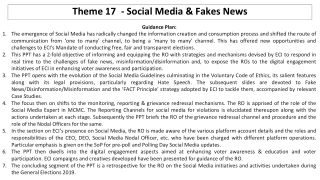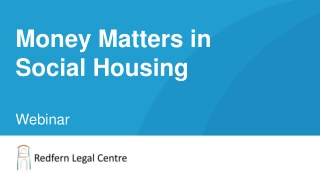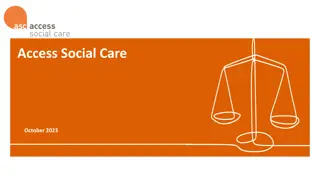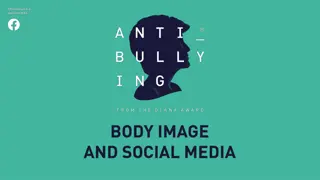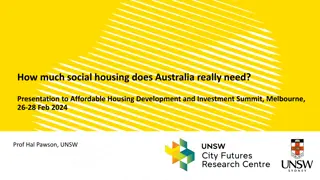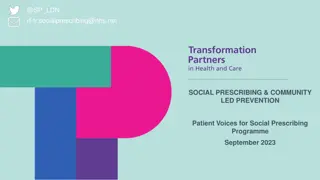Understanding Social Dilemmas in Game Theory
Explore the concept of social dilemmas in game theory, analyzing inefficient outcomes, Pareto efficiency, and examples such as public goods and pricing strategies. Delve into the implications for societal welfare and the complexities of decision-making in social interactions and game theory.
Understanding Social Dilemmas in Game Theory
PowerPoint presentation about 'Understanding Social Dilemmas in Game Theory'. This presentation describes the topic on Explore the concept of social dilemmas in game theory, analyzing inefficient outcomes, Pareto efficiency, and examples such as public goods and pricing strategies. Delve into the implications for societal welfare and the complexities of decision-making in social interactions and game theory.. Download this presentation absolutely free.
Presentation Transcript
GameTheory: Social Dilemmas, and SocialPreferences Lecture 5 Juuso V lim ki September 19, 2023
Social Interactions and Game Theory Last lecture: elements of games Simultaneous choice of strategies Outcomes and preferences (payoffs resulting from them) Dominant strategy equilibria and Nash equilibria Not all equilibrium outcomes are good: social dilemmas This lecture: closer look at social dilemmas, measuring preferences? Definition and examples of social dilemmas? Public goods, externalities, business stealing, race to the bottom Societal responses to social dilemmas: institutions Game theoretic responses: reciprocity in repeated games Measuring preferences in games Experimental method A sequential game: backward induction Results on other regarding preferences in some famous experiments
Defining social dilemmas Inefficient outcomes An outcome (i.e. a pair of strategies) in a two-player game is said to be inefficient if there is an alternative outcome that is at least as good as the original outcome for both players and strictly better for at least one of the players Social dilemma A game results in a social dilemma if it has a dominant strategy solution (or a unique Nash equilibrium) that is inefficient Pareto efficiency An outcome is Pareto efficient if it is not inefficient Another way of phrasing this is that an outcome is Pareto efficient if improving the outcome for one player makes some other player worse off Is Pareto efficiency a good criterion for societal welfare?
Examples of social dilemmas: public goods Two players decide whether to Keep 3 or Contribute it to a public project yielding 2 for each player 1. Players: Ann, Bob 2. Strategy of each player: contribute, keep 3. Information: simultaneous choice: neither knows what the other chose 4. Outcomes: profile of choices 5. Payoffs: final income Bob Contribute Keep Contribute 4 2 Ann Keep 5 3
Examples of social dilemmas: pricing Ann and Bob own competing firms. Consumers select the firm with the lower price, at equal prices, buyers are shared between firms 1. Players: Ann, Bob 2. Strategy of each player: high or low price 3. Information: simultaneous choice: neither knows what the other chose 4. Outcomes: profile of choices 5. Payoffs: profits (industry profit higher at high prices) Bob high low high 4 0 Ann low 6 3
Examples of social dilemmas: tax competition Belgium and Netherlands decide on corporate taxes with an idea to lure international companies with low rates 1. Players: Belgium, Netherlands 2. Strategy of each player: 20% or 18% corporate tax 3. Information: simultaneous choice: neither knows what the other chose 4. Outcomes: profile of choices 5. Payoffs: tax revenues Belgium 20% 18% 20% Netherlands 2 0 18% 3.6 1.8
What do we learn from this? Maybe the invisible hand does not always apply Many privately decided activities have impacts on others: speeding, smoking, talking loud on mobile Invisible hand is really about the price mechanism in competitive (price taking) markets Lessons applicable to games with many players International pollution control, global tax competition etc. Lessons applicable with many strategies When setting prices, undercutting the price of competitor leads to ever lower prices In tax competition, undercutting neighboring countries tax rates leads to lower rates Result: Race to the bottom Notice that only players are considered here Buyers benefit from price competition (but not considered players)
How to escape social dilemmas? The only way is by changing the payoffs Ways of doing this: Legislation: use outside enforcement capacity to punish (e.g. by jail sentences) for undesirable behavior This changes the payoffs directly Fiscal means: taxes for bad and subsidies for good behavior Educational campaigns to raise consciousness of the harm imposed on others (manipulating subjective payoffs?) Voluntary participation in binding contracts Montreal protocol (1987) to save the ozone layer (phasing out CFC s and NCFC s). All countries signed. What explains the success? Acid rain: US (and European) cap and trade programs hugely successful. What explains this success? Why is it so hard to get similar success with CO2 control?
How to escape social dilemmas? Responses without external enforcement Responses using timing: Reciprocity: since most of social interactions take place over time, rewarding for good behavior and punishing for bad in future periods may work: e.g. firms may charge high prices if undercutting leads to price wars in the future This response requires a future to give incentives for current behavior Linking together different decisions Social norms: the traditional way of dealing with stealing, adultery etc. Bad behavior leads to exclusion from the group of players or other punishment in other interactions Even if punishment is unpleasant ( this hurts me more than it hurts you but ), the social norm must insist that the group members carry out the punishment Forgiveness may be good, but too much of it takes away the effect of the social norm Subjective payoffs may be such that social dilemmas in terms of the material payoffs are actually not social dilemmas (altruism and other regarding preferences)
How to figure out actual preferences Questionnaires ask directly how individuals value various alternatives how can you make sure that they respond truthfully - e.g. Becker-De Groot-Marschak (BDM) method does this nicely - Here is an example from development economics: how valuable is a portable water purifier for a potential recipient? Put X in an envelope and ask what is the value Y of the purifier to the family. After answering, one randomly selected family gets to open the envelope and gets X if X>Y and gets the purifier if Y>X. Now you want to tell the truth! the answers to survey questions may depend on how the question is framed - an amusing example: https://www.youtube.com/watch?v=G0ZZJXw4MTA
How to figure out actual preferences Observing actual choices economists often insist on revealed preferences - the only information that the economist has consists of the observed choices -> the preferences must be consistent with these choices (-> we can test the consistency or coherence of choices in observational data) very hard to tell preferences from other factors - e.g. did Ann choose an apple over an orange because she likes them more or because apples were less expensive - unless we have full information about all the factors affecting the decisions (prices in this example) we will not be able to find out the preferences in observational data the obvious advantage is that with this method, the economist observes real decisions with economic consequences
How to figure out actual preferences Laboratory experiments subjects recruited for an experimental session college students participate in a game or in a task in a laboratory (often a collection of isolated computer terminals) M-Turk and other online platforms for incentivized tasks and games choices, outcomes, payoffs and all other factors in the game are under the experimenter s control -> the design (often called the treatment) can be manipulated along many dimensions the experiment may be reproduced in the same form for different subjects, different populations etc. -> makes possible to test the sensitivity of behavior to different populations strange context -> what does behavior in an experimental setting imply about behavior in the real world? -> external validity
How to figure out actual preferences Field Experiments Different types of field experiments Artefactual field experiments: Lab experiment with a different population of players Use a public goods experiment to predict non-experimental outcomes (examples of this: increased giving correlates in some studies with higher wages in public sector and with less pressure in the working place in another) Framed field experiments: tasks or games that correspond to the actual activities of the players but are performed in controlled and observed settings Trading decisions by professional traders Financial decisions by finance professionals Auctions for professionals organizing procurement or bidding in procurement Natural experiments Subjects not aware that they are participating in an experiment Examples: experiments to infer price responses from consumers, effect of nudges in taxation etc., natural experiments on hiring (imaginary CV s with experimentally chosen names that indicate sex, ethnicity, etc.)
The simplest laboratory game: dictator game Two players, but a single decision maker The players do not know each other and they do not see each other during the game One of the players is given 10 and she must divide it between the two players: X for herself and (10-X) for the other player At the end of the game, the players are awarded the sums as decided by the decision maker Material (monetrary payoffs) are just X for the decision maker and (10-X) for the other player Material payoff maximization: decision maker should keep all for herself In lab, often 6 or 7 is kept: therefore altruism? What about external validity: what does this tell about preferences outside the lab?
A more interesting game: the ultimatum game Sequential decisions Player 1 proposes a division of 100 Player 2 accepts or rejects (if rejected neither player gets anything) What would you propose, what would you accept? This calls for new type of analysis
Backward induction What should you propose Even if you only care about monetary payoffs, you should make a proposal that gets accepted To get a sense of what gets accepted, put yourself in the shoes of Player 2. Backward induction is the process of solving the game from its end The game ends with Player 2 s decision: Player 1 s decisions are all known at this point Therefore Player 2 accepts if it is the most preferred choice With material payoffs, she should accept all positive offers But then with material payoffs, Player 1 should propose the split (99 , 1 ). Do we really expect this? Subjective payoffs Would you accept all proposals that give you a positive amount of money or would you have different subjective preferences Most people reject outrageously low offers (how low is considered outrageous varies by individual) Let s see how this plays out:
What is accepted? (Kenyanfarmersvs. US students) all accept 50/50 offer more than half accept 90/10 at Emory U:ssa almost all farmers reject 90/10 offer Source: The EconomybasewdonHenrichet al. (2006): CostlyPunishment Across Human Societies.Science312 (5781): pp. 1767 1770. http://tinyco.re/2043845
Ultimatum game in two populations:Kenyan farmers and US students
A version with three players Otherwise as before, but now two responders and the offer is shared between all responders that accept (if both reject, nobody gets anything)
Some lessons from ultimatum games Social preferences seem to be at play here many players reject offers considered unfair ( punish the greedy or don t be a sucker ) even for maximizing own material payoff, the optimal offer depends on its probability of being accepted - you may want to calculate the expected monetary gains for various proposals from the graphs above Proposer gets more than half taking the initiative is valuable in other contexts too, e.g. setting the agenda for committees Credible threat is also useful you should offer me at least 50% if you believe I turn down all smaller offers Competition amongst the responders improves the power of the proposer
Summary Games as models of social interactions Solution concepts Social dilemmas Misalignment of private and societal preferences Solving the dilemmas: binding contracts, laws, social norms, reciprocal behavior Next lecture Institutions and power Efficiency, fairness and negotiations
